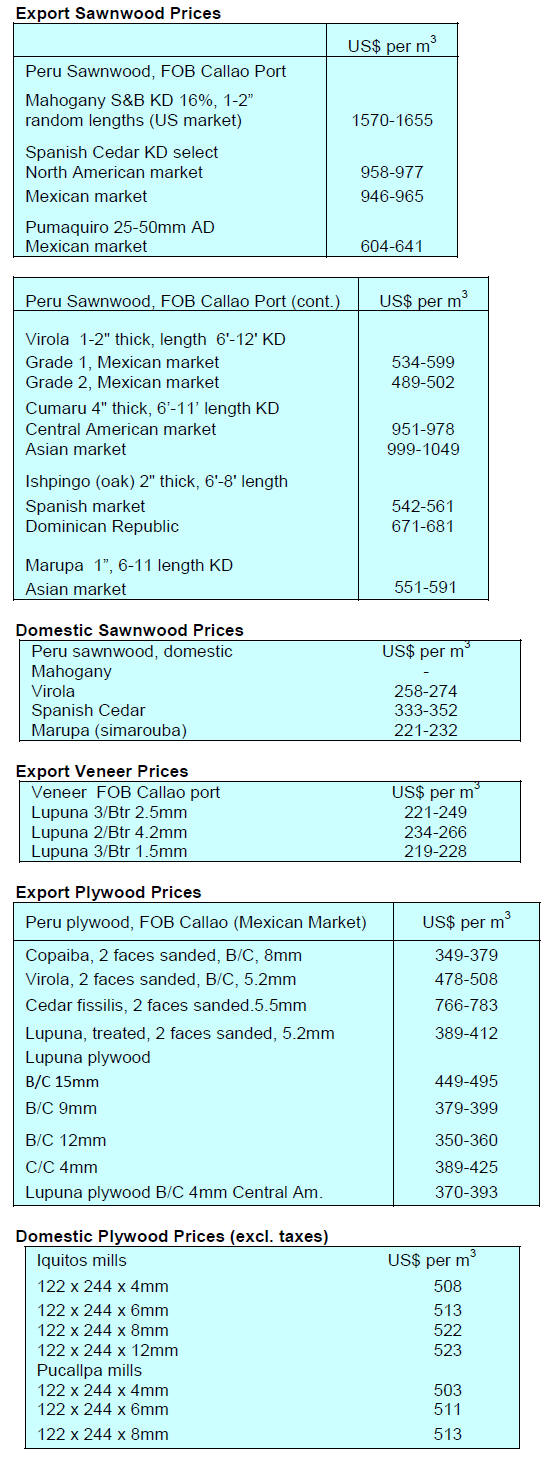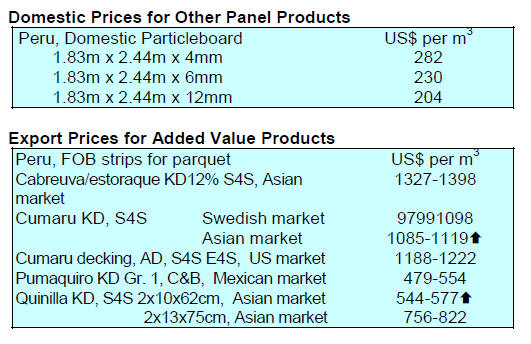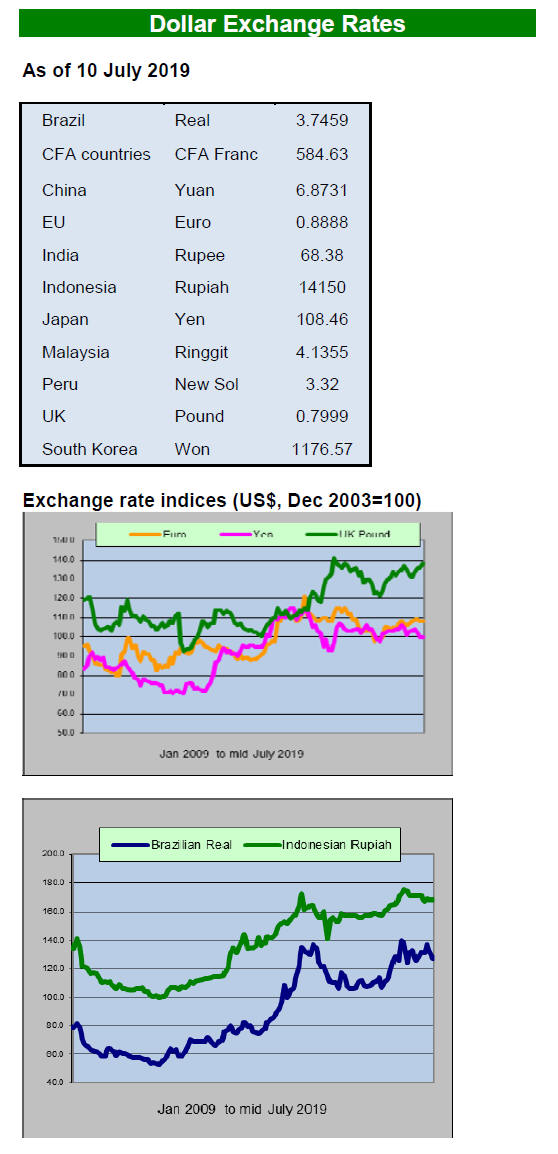3.
MALAYSIA
Plywood production threatened by
declining log
supplies and rising costs
The media in Sarawak recently highlighted the impact
declining log production and rising production costs are
having on the plywood industry in Sarawak.
Hashim Bojet, General Manager of the Sarawak Timber
Industry Development Corporation, (STIDC) said he is
concerned that, because of the log shortage and rising
production costs, some plywood mills, including the major
producers in Sarawak, have had to cut production and that
some are considering closing operations entirely.
Industry analysts point out that increased charges by the
State such as the ‘cess’ and ‘premium’ are the main causes
for the higher production costs. Since July 2017 the
Sarawak government has raised the ‘premium’ to RM50
per cubic metre for all species from hill forests as well as
logs of hill species from agro-conversion areas. Previously
the ‘premium was RM0.8 per cubic metre.
The increase in hill timber ‘premium’ and the
rehabilitation and development ‘cess’, which amounts to
RM55 per cubic metre has raised the cost of logs and
timber products by around RM110 per cubic metre
(assuming a recovery rate of 50%). (Note: Premium and Cess
are financial mechanisms which allow States in Malaysia to
capture payments from concessionaires).
According to Hashim, the Sarawak government has
allowed plywood mills to import logs adding this is
exactly what other countries such as India, Vietnam and
Japan doing in order to maintain production.
See: https://www.theborneopost.com/2019/07/01/sun-setting-onplywood-
mills/
Review of Criteria and Indicators for Forest
Management
Every five years the Malaysian Timber Certification
Council (MTCC) undertakes a review of its ‘Criteria and
Indicators for Forest Management Certification or MC&I
and the latest review is underway. An Enquiry Draft has
been published and can be found on the MTCC website
(mtcc.com.my).
The Enquiry Draft is a revised standard that combines the
requirements of both the MC&I (Natural Forest) and
MC&I Forest Plantation.v2.
The MC&I Forest Management Certification maintains the
format as in the previous standard with updated
requirements based on feedback from the first public
consultation as well as the key requirements of the ISO
17021-1 and the PEFC benchmark standard on sustainable
forest management.
The major changes proposed in the revised MC&I Forest
Management Certification are summarised below:
Incorporation and streamlining of the
requirements under Principle 10 of the MC&I
Forest Plantation.v2 into the corresponding
Principles 1-9 of the MC&I Forest Management
to reduce redundancy. All the requirements in the
standard apply to both natural forest and forest
plantation, with requirements that apply only to
natural forest or forest plantation clearly
specified.
Inclusion of requirement on conversion of
degraded forest to forest plantation that is not
subject to the cut-off date of 31 December 2010
for conversion of natural forest to other land uses.
Stronger requirements on social aspects through
the incorporation of all core ILO Conventions
and the principle of gender equality.
Incorporation of requirements that provide
guidance for internal audit and management
review and improvement.
Improved clarity on the requirements for
communicating claims from certified areas.
Currently, MTCC is undertaking regional consultations in
Sabah, Sarawak and Peninsular Malaysia. As of May
2019, Malaysia had 4.27 million ha. of PEFC Certified
Forest (14 FMUs and 7 FPMUs). There are 362 PEFC
Certificates for Chain of Custody holders.
Joint Palm Oil Council and Sabah Forestry Department
initiative to restore forests
The Malaysian Palm Oil Council (MPOC) and the Sabah
Forestry Department (SFD) have agreed a project to plant
1 million native trees in the permanent forest of Lower
Kawag in Lahad Datu, Sabah.
An agreement was signed to formalise the pledge from the
Ministry of Primary Industries (MPI) to collaborate with
the SFD to plant one million trees in Lower Kawag which
is part of Ulu Segama Malua Forest Reserve as the first
site for the restoration project.
Sabah Deputy Chief Minister, Christina Liew, thanked the
MPI for their initiative in getting the major oil palm
industry players to fund the planting of native forest trees
in the east coast of Sabah over a period of 10 years. SFD
has identified 2,500 hectares of degraded forest in Lower
Kawag for restoration.
The first stage of the project involves providing a wildlife
reserves and also creating wildlife corridors (between
adjacent forests). This, said Liew, will help protect the
Borneo Pygmy Elephant and the Orang-Utan both of
which are endangered species.
Plywood prices
Plywood traders based in Sarawak reported the following
June export prices.
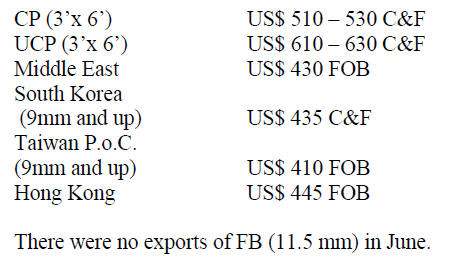
4.
INDONESIA
Trade deal with US sought to
boost exports
The Ministry of Commerce will take advantage of the
trade dispute between the US and China to export more
furniture, handicrafts and textile products to the US.
The Ministry of Trade's Director General for Export
Development, Arlinda, has announced the government
would make efforts to secure an agreement with the US to
import more products from Indonesia. In return, the
government would be willing to offer wider market
opportunities for US products in Indonesia.
In addition to the US, the government will also boost
Indonesia's exports to target markets such as Mozambique,
Chile, Pakistan, India, Bangladesh and Sri Lanka.
Higher plantation log production forecast in second
half 2019
Purwadi Soeprihanto, Executive Director of the
Association of Indonesian Forest Concessionaires (APHI),
said log production between January-May 2018 reached
19.26 million cubic metres while between January-May
this year production was around 18.71 million cubic
metres, an almost 3% decline.
The latest data corrects earlier statements that there was an
increase in production in the early part of 2019.
Purwadi said the decline in production was due mainly the
impact of the ongoing peatland restoration in industrial
timber plantation concessions [HTI] and revision of the
targets in the Business Work Planning Document [RKU].
Log production from natural forests in the period January-
May 2019 increased sharply to 2.73 million cubic metres
compared to 1.85 million cubic metres last year.
Although plantation log production declined, Purwadi was
optimistic that in the second half of 2019 log production
from industrial plantations wouldl rise as peatland
restoration will be completed and controlled harvesting of
peatland plantations will commence.
APHI noted that the average price of logs from natural
forests currently range from Rp1.4 million/cu.m to Rp1.5
million/cu.m while the average price of logs from
industrial plantations such as acacia, eucalyptus and jabon
is currently around Rp. 600,000 cu.m to - Rp.
700,000/cu.m.
See:
https://ekonomi.bisnis.com/read/20190628/99/939034/produksikayu-
bulat-terkoreksi-tipis
Market downturn – plywood industry proposing
changes to fiscal policies
Indonesia’s panel product exports fell almost 20% year on
year in the first half of 2019. Plywood exports to the US
are currently down 38% from a year earlier.
The Executive Director APHI has reported that stocks of
plywood are mounting up because of sluggish demand.
There has been a decline in plywood prices since the
beginning of the year (see index below) and this is
affecting demand for domestic natural forest logs.
To help the sector weather the current downturn the
industry is proposing changes to number of fiscal policies
including accelerating the VAT refunds and a review of
wood pricing assumptions used to determine taxes and a
waiver of the Land and Building Tax. The industry is also
again pursuing a decision to allow log exports.
https://www.indopos.co.id/read/2019/07/08/180659/dunia-usahaminta-
insentif-pasar-kayu-bulat-alam
Diversify production to raise sector output
Forestry sector players estimate that, if the so-called
‘multi-forestry concept’ that would have companies
extensively diversifying to produce a wide range of
products can become a reality, then export values from the
forestry sector could rise from the current US$12 billion in
2018 to US$70 billion in 2045.
Purwadi said this projection was based on two scenarios:
First, through optimising utilisation of forest
areas which cover over 68 million hectares
For production of upstream and downstream
products.
Second, developing markets for non-timber forest
products, environmental services and ecotourism.
Purwadi said, he has identified 12 non-timber forest
products that can be commercialised more effectively by
the forestry sector including pine gum, rattan, honey,
agarwood, citronella, bamboo, coffee and rubber.

5.
MYANMAR
Calls for lower taxes on
imported logs
It has been reported that the Myanmar Timber Merchants
Association (MTMA) will submit a proposal to the
government to reduce the import tariff on the imported
logs.
The Managing Director of one company which imports
logs from Africa said the company has to pay 15%
Custom Duty, 5% Special Commodity Tax, 5%
Commercial Tax plus the 2% advance settlement of
corporate tax. The high tax is discouraging development of
the industry, say analysts.
Myanma Timber Enterprise (MTE) Deputy General
Manager, U Khin Maung Kyi, responded saying the matter
will be taken up with the Forest Department, the Custom
Department, Myanmar Port Authority and other importers.
Commenting on the proposal analysts pointed out that
imported logs help balance supply and demand in the
domestic market as well as create export opportunities so
would encourage the government to review the taxes and
charges on imported logs.
MTE Tests QR Code for traceability
The MTE has announced the results of a pilot test of QR
Code traceability covering about 500 logs from the Gan
Gaw area which is acknowledged as ‘the home of good
teak’. The Myanmar Timber legality Assurance System
(MTLAS) Gap Assessment Project undertaken in 2016-17
recommended the simplification of the traceability
mechanism and introduction of an IT system.
The Forest Department and MTE worked on a system to
address the concerns identified in the Gap Analysis. It was
this review that led to the publishing of the so-called CoC
Dossier which detailed the log flow process and relevant
documents along the supply chain.
Myanmar EITI calls for greater data transparency
The Myanmar EITI (MEITI) office has just published its
second report for Myanmar which includes the forestry
sector. The MEITI report has attracted mixed reactions
from the forestry sector as it points out significant
inconsistencies in the data reported from various
government agencies. MEITI has called on the authorities
to reconcile the data and establish greater transparency in
the sector.
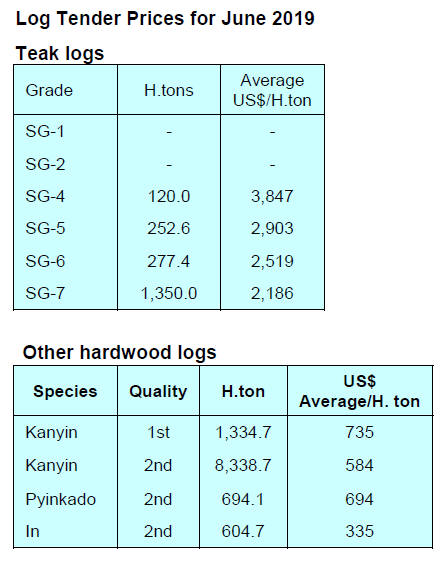
6. INDIA
Economic Survey forecasts 7% GDP
growth next year
Prior to the discussion on the latest national budget the
Economic Survey 2018-19 was presented to the Indian
parliament. This suggests the Indian economy is likely to
be the fastest-growing major economy in the world as
GDP is expected to rise to 7% in fiscal 2020, driven higher
than the 6.8% growth this year by accelerating investment
and private consumption.
Additional tax benefit for ‘affordable home’ buyers
The Indian government has raised the level of tax
deduction allowed against interest on home loans for
affordable housing. This benefit is available for home
loans agreed until March 31, 2020.
This added benefit for home buyers is expected to lift sales
this financial year. Analysts had expected the stamp duty
to be abolished given that the GST is in effect.
For more see: https://housing.com/news/budget-2018-top-5-
expectations-real-estatesector/?
utm_source=internal&utm_medium=email&utm_campai
gn=subscribersDigest
Calls for increased import duty on wood raw materials
Vadiraj Kulkarni, Chief Operating Officer of the
Paperboard and Specialty Papers Division of the
diversified ITC (previously known as the Imperial
Tobacco Company), has said, in order to encourage
domestic sources of raw material and processing, the
customs duty on timber imports should be raised to 10%
as the current rate (nil from ASEAN countries under
preferential agreements) discourages investment in
forestry in India.
ITC’s pulp mill at Bhadrachalam utilises pulpwood from
sustainably managed sources across the country. This raw
material can substitute for imported pulp, said Kulkarni
and an expansion of local raw material production will
generate income for rural communities.
Plantation teak imports
The dull market and declining profitability in the timber
importing sector has been further aggravated by the
requirement for many companies and traders to make
advance GST payments. Generally, GST is applied on a
supplier of goods and service at the time of receipt of
payment. However, in some cases, an advance payment is
required.
See: https://taxguru.in/goods-and-service-tax/gst-advancepayment.
html
Efforts are being made by importers to lobby the
authorities to ease the advance payment conditions. It was
hoped that the new budget would address this and other
issues facing traders and manufacturers but analysts say
there is little that has changed.
The rupee is steady against the US dollar at around Rs.69
and is trading in a narrow range as prospects of an interest
rate cut by the US Federal Reserve will change the
direction of exchange rates.
C&F prices for teak imports from various sources continue
within the same range as reported earlier.
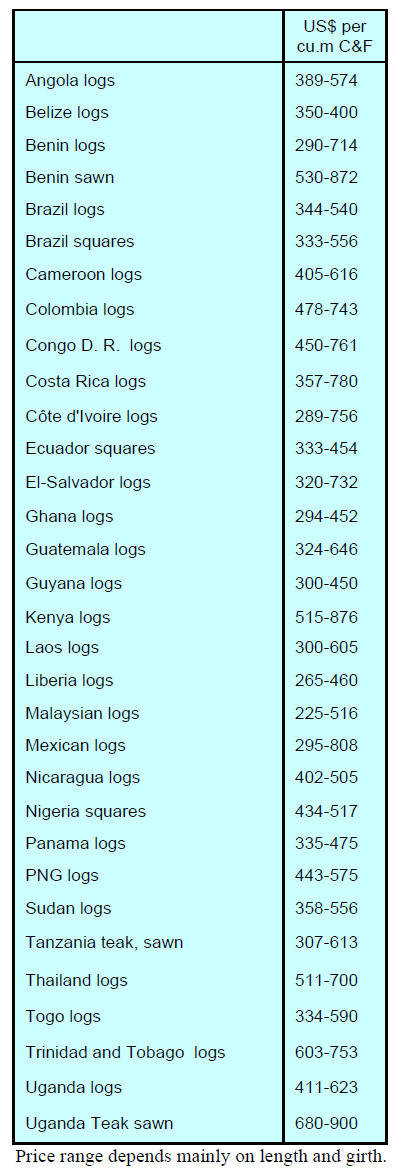
Locally sawn hardwood prices
Analysts report there are signs of improved demand which
has lifted import volumes.

Myanmar teak prices
A steady demand for Myanmar teak is supporting recent
price increases but is not sufficient for traders to think
about further increases.
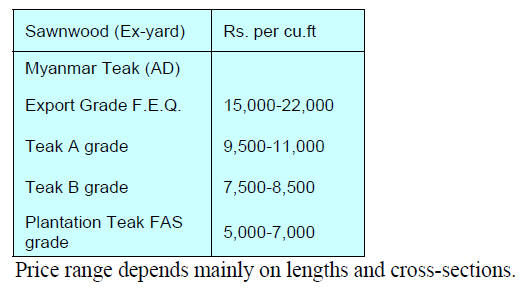
Sawn hardwood prices
No prices movements have been reported.
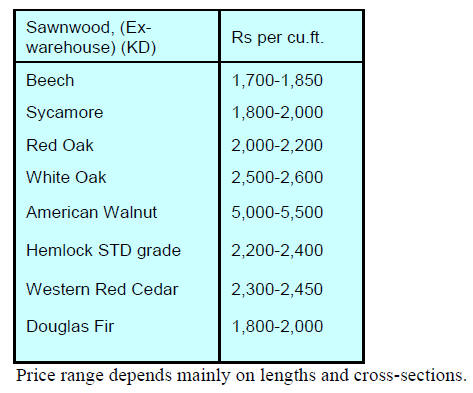
Plywood update
Plywood producers are saying there was little in the 2019
budget that offers any relief for the tough trading
conditions they are experiencing.
Most of all they are looking for a reduction in the GST for
wood products, considered raw material inputs to other
sectors such as housing. No price movements have been
reported.
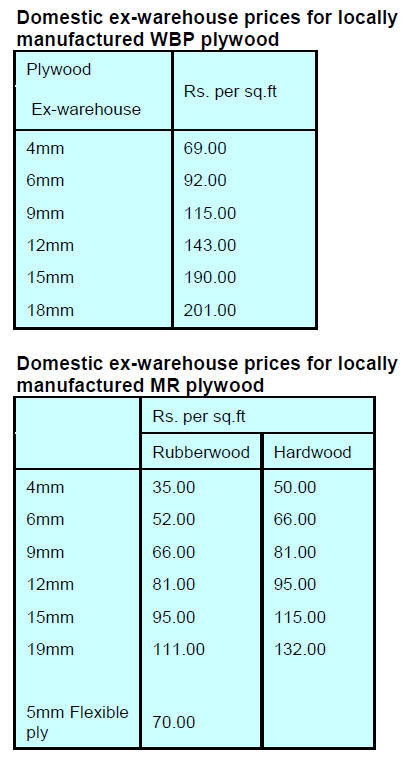
7.
VIETNAM
Vietnam captures opportunities
from US/China trade
dispute
In the first three months of 2019 Vietnam’s wood product
exports were valued at around US$2.3 billion, some 16%
higher than in the same period in 2018. The top export
markets for wood products are traditionally the USA, EU,
China, Japan and S.Korea.
According to the Ministry of Agriculture and Rural
development (MARD), the export growth rate is expected
to rise once the EU/ Vietnam Free Trade Agreement enters
into force.
As is the case with several other countries the USA/China
trade conflict is creating opportunities for expanded
investment and exports for Vietnam-made wood products
to take advantages of preferential tariffs into the US.
However, some Vietnamese exporters have fallen into the
trap of relabeling Chinese imports as made in Vietnam.
Vietnamese authorities are now addressing this and have
stepped up Customs checks.
See: https://baohaiquan.vn/manh-tay-loai-bo-go-bat-hop-phapde-
thuc-xuat-khau-go-103078.html
Vietnam jumps to top of ASEAN wood product
exporters
Mr. PhamVan Dien, Deputy Director of the Department of
Forestry, has reported that in the first half of 2019
Vietnam jumped to the top of the list of ASEAN wood
products exporters. It also became the 5th largest globe
wood product exporter because of the sustained high
growth of industrial production.
He pointed out that the top international markets US, EU,
Japan and S. Korea accounted for over 80% of Vietnam’s
wood product exports in the first six months of 2019 and
this contributed to the positive socio-economic
development of the national forest sector which now
supports millions of jobs.
In the first half of 2019 around 110,000 ha. of new
plantations were established however, currently, there is a
drought in many areas in Vietnam and this is increasing
the risk of forest fires especially in provinces such as
Nghean, Hatinh, Quangbinh, Quangtri, Thuathienhue,
Danang, Quangnam, Quangngai and Phuyen.
Rising demand for verified legal raw materials
Recently, Vietnam has become more dependent on
imported timber raw materials to produce wood products
for export and a large volume of American hardwoods is
being imported.
Robert Hanson, Head of the Foreign Agricultural Service
of the US Embassy in Vietnam, has said Vietnam is now
one of the main S.E. Asian importers of American
hardwoods accounting for over 70% of US timber exports
to S.E. Asia.
He continued, “American wood is known as highly
traceable, legally planned and harvested, as well as fully
documented which meets the legal requirements and
technical standards of the major finished product
importing countries”.
At an ASEAN Conference on ‘American wood in
furniture design and production’ held in June Mr. Ha Cong
Tuan, Vice Minister of MARD has said US is the
Vietnam’s biggest partner in the trade of wood products
and that the trade is in both directions with finished
products being shipped to the US.
Mr. Nguyen Ton Quyen, Deputy Chairman of the Vietnam
Timber and Forest Product Association, has said Vietnam
is aiming to export wood products valued at US$11 billion
in 2019 and to meet this target Vietnam needs about 35-40
million cubic metres of raw timber, much of which must
be imported.
Vietnam has halted exploitation of natural forests for three
years and has been pushing afforestation. The 3.5 million
hectares of plantations will provide about 35 to 40 million
cubic metres of timber in the next five to 10 years in
which time Vietnam will be dependent on imports of raw
materials.
See: http://vietnamnews.vn/economy/521804/viet-namdevelops-
forestry-industry-explores-collaboration-withus.
html#QCyQgWFFY4jOSF3a.99
High occupancy rate in Economic Zones
According to the Ministry of Planning and Investment, in
June 2019 there were 326 Industrial Parks (IPs) and 17
coastal special economic zones (EZs) in Vietnam of which
251 are fully operational. The occupancy rate of the
completed zones is around 75%.
It is estimated that in the first six months of 2019, the IPs
and EZs attracted 340 foreign investors with a registered
capital of about US$8.7 billion. As of June 2019 there
were over 8,900 investment projects underway worth
about US$186 billion.
8. BRAZIL
Brazil may lead ‘new forest economy’
- has great
potential for reforestation
With increasing investments in restoring natural forests
and expanding sales of certified timber local analysts say
Brazil could become a global leader in what some are
calling a "new forest economy."
Companies involved in commercial logging and timber
certification are currently examining a market model that
reconciles profit with forest preservation and reforestation
goals.
The Brazilian Agricultural Research Corporation
(EMBRAPA) has been carrying out studies to identify
how best to recover deforested areas using native timber
species specific for each biome. After restoration these
areas could be made available for sustainable commercial
logging.
Among the native timber species of economic value is
paricá (Schizolobium amazonicum) found in the Amazon
region. This species is said to have a growth rate equal to
that eucalyptus and is a good raw material for industry.
While companies in the US invest about US$100 billion a
year in commercial reforestation projects Brazil is
investing much less with most being in pine and
eucalyptus with very little investment in natural forest
restoration.
Brazil has about 50 million hectares of forest area, much
of which is degraded due to over harvesting and
abandoned farms which are suitable for reforestation
according to a study published in the Journal Science in
July.
Forest biomass exports from Southern Brazil
During the IV International Biomass Congress a
spokesperson from the Forestry Association of Santa
Catarina (ACR) reported that in 2018, Brazil exported 1.6
million tons of wood chips, sawdust and wood waste
generating about US$144 million. Japan imported just
over half of all exports, mainly wood chips for energy and
pulp production.
The ACR participated in a panel discussion on forest
biomass and presented an overview of the potential of
Santa Catarina. According to the Forestry Statistical
Yearbook 2019 Santa Catarina State accounted for 29% of
Brazilian exports of wood pellets for energy purposes last
year. In 2018, Brazil exported 226,100 tonnes of wood
pellets of which the United Kingdom imported US$24.4
million and Italy US$12.6 million.
The level of industrialisation in Santa Catarina for wood
products is high according to ACR. The State has a
diversified industry. The ACR 2019 Yearbook illustrates
that municipalities that host an active forestry sector have
seen significant improvements in the quality of life of the
population over the last few years.
Potential increase in wood products supply to
international market
Following the first meeting held in Brazil between the
Brazilian Association of Mechanically-Processed Timber
Industry (ABIMCI) and the US National Association of
Home Builders (NAHB) in May, a follow-up meeting
between the two organizations took place in Washington
DC, recently.
ABIMCI reports that the objective was to advance
negotiations for a possible increase in the supply of wood
products from Brazil to meet the demands and
requirements of NAHB. The NAHB represents more than
140,000 associated companies in the civil construction
sector.
While exports of sawnwood and flooring continue the
agenda of the meeting addressed the possibility of
expanding Brazilian exports of plywood and doors since
these products can satisfy the technical and environmental
requirements demanded in the American market.
Regarding sawnwood, the primary demand is for structural
use timber and for a better understanding of legal
requirements and applicability the NAHB provided all the
necessary technical information established by the
American Lumber Standard Committee (ALSC).
According to NAHB, the US civil construction sector is
concerned about the recent tax imposed by the US
government on China and also on the slow progress in
negotiations with Canada and Mexico as this may disrupt
supplies from these producers thus creating an opportunity
for Brazil.
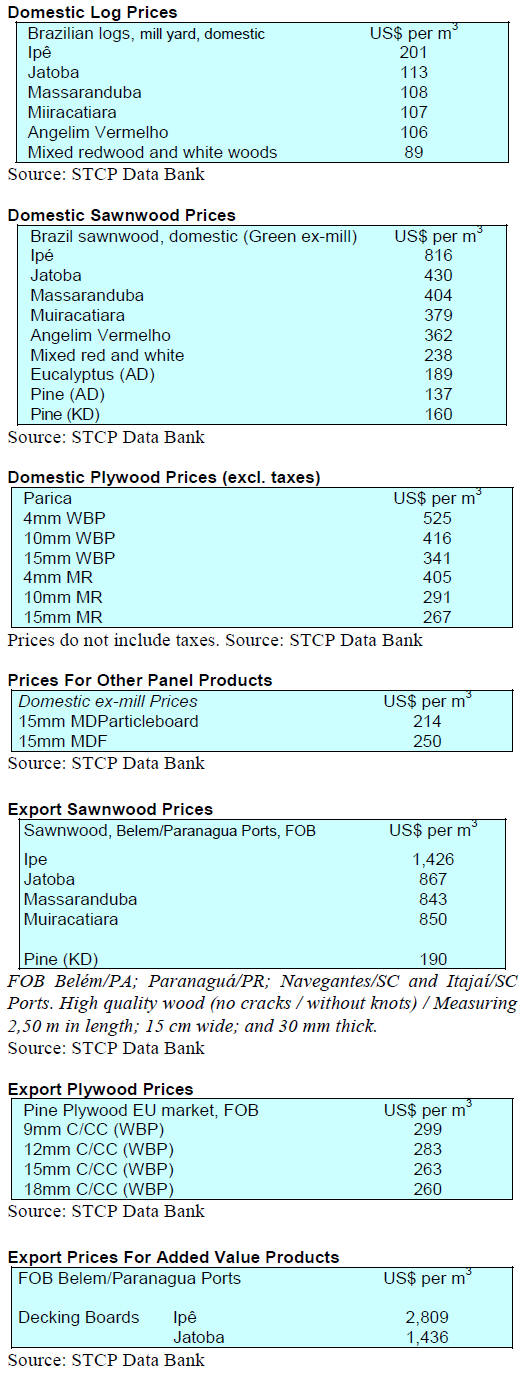
9. PERU
Government and private sector
committed to the
promotion of wood value chain
To promote the forestry sector and strengthen the wood
value chain the Regional Government of Ucayali
(GOREU) and the National Forestry and Wildlife Service
(SERFOR) arranged technical meetings to plan
implementation of the Forest Transport Guides (ER-GTF)
and the Electronic Operations manual for wood products
which are part of the Control Module of the National
Forest and Wildlife Information System (MC-SNIFFS).
SERFOR and GOREU consider MC-SNIFFS as key to
boost the forestry sector as an activity that promotes the
economic and social development of the country through
sustainable use and legal access to timber resources.
In related news Pro-Ucayali, a private sector initiative,
announced a new pilot project for reforestation and
development of the wood industry in the Ucayali region.
The work will be conducted in cooperation with the
Regional Government of Ucayali and the Chamber of
Commerce, Industry and Tourism of Ucayali. Pro-Ucayali
is working with the Andean Development Corporation
(CAF), various green funds and other institutions to try
and secure soft loans for small and medium sized entities
in Ucayali.
Funding secured for ecological projects in the Loreto,
San Martín and Madre de Dios regions
The Ministry of Economy and Finance (MEF) has
authorised loans from the Inter-American Development
Bank (IDB) for up to US$16. 8 million for the financing of
ecological projects in the Loreto, San Martín and Madre
de Dios regions.
These resources will be used to partially finance the
project "Improvement of support services for the
sustainable use of the biodiversity of the ecosystems in the
forest landscape in the Tarapoto - Yurimaguas corridor, of
the Departments of San Martín and Loreto".
Parallel projects will be undertaken in the Puerto
Maldonado - Iñapari corridor and in the Amarakaeri
Communal Reserve in the Department of Madre de Dios.
Some resources will be allocated for efforts on improving
of environmental monitoring and mapping deforestation in
the Amazon forests of Peru.
Successful trade mission to Dominican Republic
A third trade mission by Peruvian timber sector companies
was recently undertaken in the Dominican Republic.
Meetings were held with importers of sawnwood,
woodbased panels and flooring.
The mission included companies from Ucayali and Madre
de Dios and provided for direct contact with Dominican
importers as well as an opportunity to assess the level of
wood product demand in the Dominican Republic which is
Peru’s fourth largest market for wood products.
